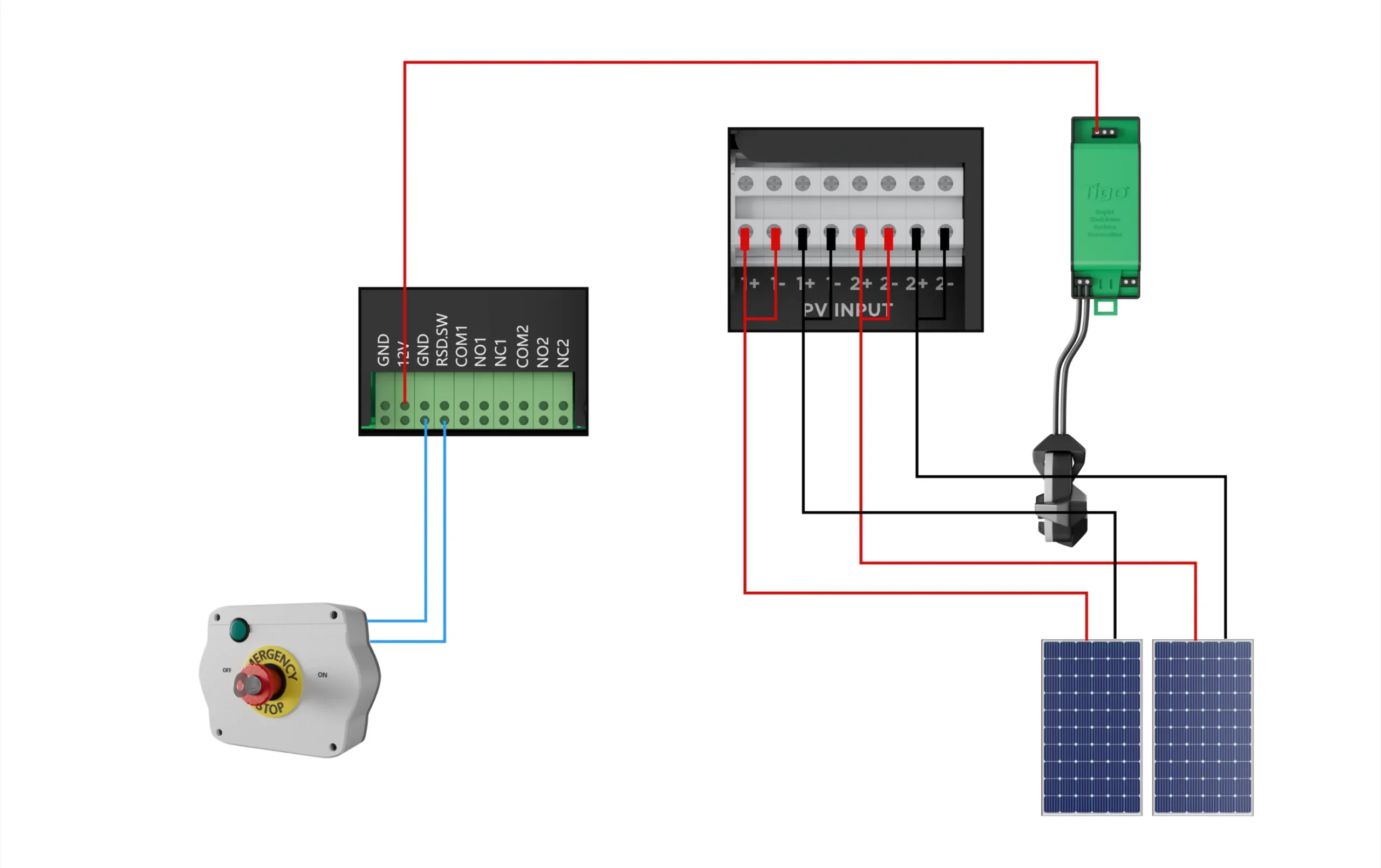As the solar energy industry grows rapidly, safety is becoming more and more important. RSD (Rapid Shutdown) has emerged as a key technology in ensuring the safety of solar power systems. In simple terms, RSD is designed to quickly shut down the DC (direct current) side of a solar power system in case of grid failures, fires, or manual disconnection. This helps to lower the voltage and prevent accidents, making the system much safer to work with.
Today, most RSD systems include a shutdown device and a power box. These components work together to disconnect the solar panels from the inverter when needed, ensuring that installation and maintenance are done safely, even in emergencies. North America, in particular, has strict regulations on using RSD systems in solar inverters.
Market Regulations: NEC 690.12 Standard
In North America, solar systems need to comply with the National Electrical Code (NEC) 690.12 standards. These rules require that all solar systems installed on buildings include a rapid shutdown feature to ensure that the system can quickly lower its voltage in case of an emergency.
Some key requirements include:
- RSD applies to wires inside a building that are longer than 1.5 meters or more than 3 meters from the solar array.
- Once the shutdown is activated, the system’s voltage must drop below 30 volts, and power must be limited to under 240 VA within 10 seconds.
- The voltage and power are measured between any two wires or between a wire and the ground.
- RSD devices must be labeled properly according to NEC guidelines and must be certified and listed for use.
Based on these rules, RSD devices on the market today ensure that in the event of a power outage or an emergency, the solar system voltage drops to safe levels within 10 seconds.
How RSD Works
RSD systems are typically made up of a shutdown box and a power box. The shutdown box is installed between the solar panels and the inverter, and it contains relays that are powered by the power box. When the system needs to shut down, the relays cut off the connection between the solar panels and the inverter, reducing the voltage and ensuring that people can work around the system safely.
RSD Shutdown Modes: Active and Passive
There are two main ways that RSD systems operate:
- Passive mode: When the grid goes down or the system detects that it’s operating in “island mode” (meaning the system is not connected to the grid), the relays automatically disconnect the solar panels from the inverter.
- Active mode: In the event of an emergency like a fire or electric shock, the RSD system can be manually activated using an emergency switch. This cuts off power and disconnects the system completely, preventing further damage or injury.
RSD Features in Luxpower’s American Market Models
Luxpower has designed its American market models with the latest RSD requirements in mind and offers two key solutions:
1. LXP Series One-Button Shutdown: Luxpower’s LXP series hybrid inverters come with an integrated one-button RSD feature. In an emergency, users can quickly disconnect the solar system with just one button press. This built-in feature simplifies operation and meets NEC 690.12 standards, eliminating the need for external RSD devices. It’s ideal for residential and small commercial solar systems, ensuring safety by dropping the system voltage and power within 10 seconds.

2. Dry Contact Interface for Off-Grid Models: Luxpower’s off-grid SNA series include a pre-installed dry contact interface, which allows users to connect third-party RSD switches. This flexibility gives users the option to manually install an external emergency shutdown switch (like an emergency stop button), offering customized safety solutions based on the specific project needs.

RSD Applications and Market Trends
In practice, RSD devices are critical for quickly and effectively protecting solar systems and the people installing or maintaining them. The demand for RSD systems is growing fast, especially as rooftop solar installations spread. Since rooftop solar systems can generate DC voltages of up to 1000 volts, RSD devices are essential for making sure that people can safely work on these high-voltage systems.
Looking forward, RSD will likely become even more common, not just in North America but also in other regions like Europe and Asia, as safety standards tighten. Many companies are now marketing solar inverters with RSD as a key safety feature, and we expect this technology to expand to more types of solar systems in the future.
Additionally, today’s RSD technology is evolving to include more advanced features, such as integration with smart monitoring systems. For example, Luxpower’s LXP series allows users to monitor the system’s status through a control platform, providing real-time updates and ensuring that the system remains safe and operational at all times.
Conclusion
RSD technology has become an essential part of ensuring the safety of solar power systems, especially in regions with strict safety standards. By providing a fast, reliable way to shut down the system in emergencies, RSD devices protect both people and equipment. Luxpower has integrated effective RSD solutions in its American market products, offering both one-button shutdown in the LXP series and dry contact interfaces for off-grid models.
As solar systems continue to grow and safety standards rise, RSD technology will likely become even more advanced and integrated with smart control systems, offering users greater peace of mind and safety.

